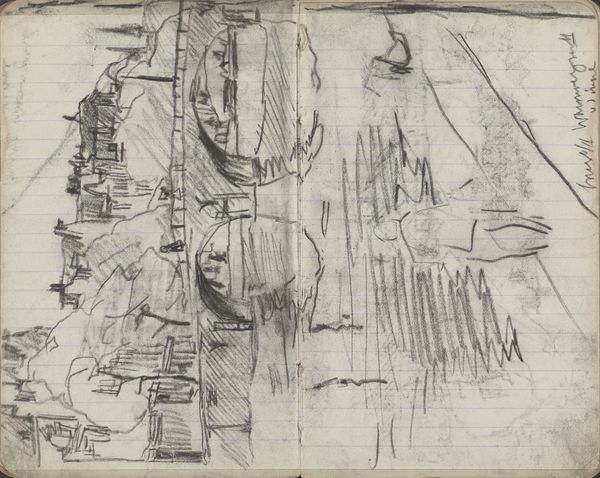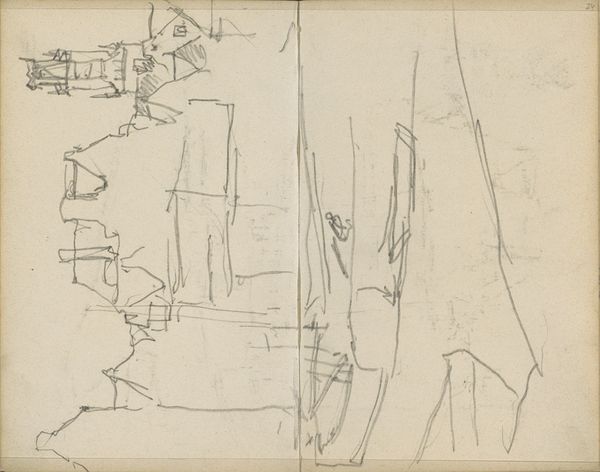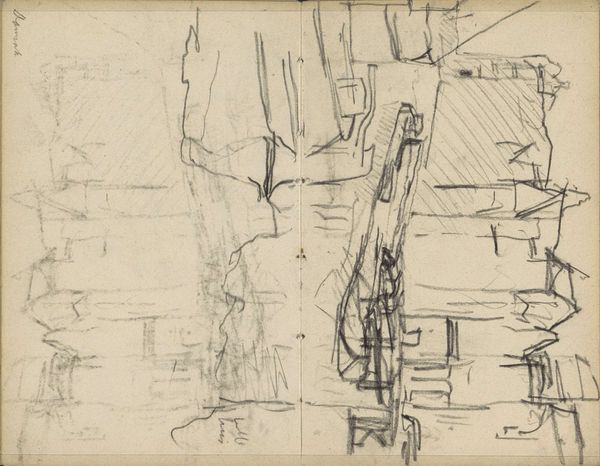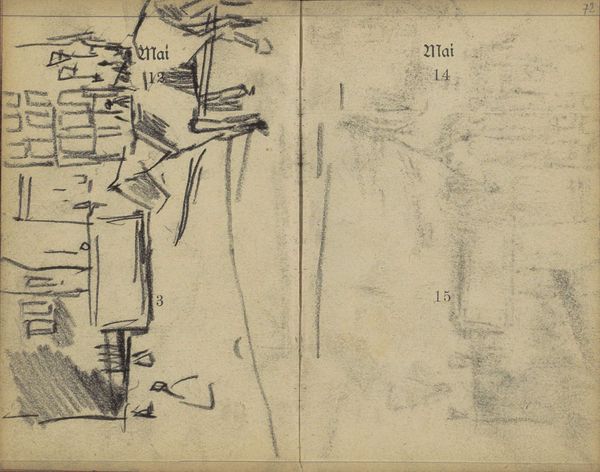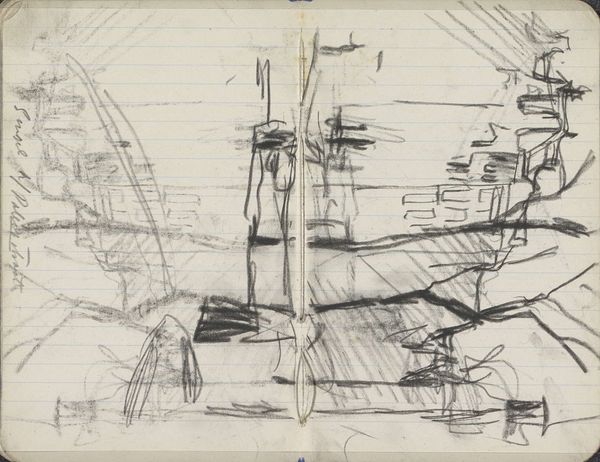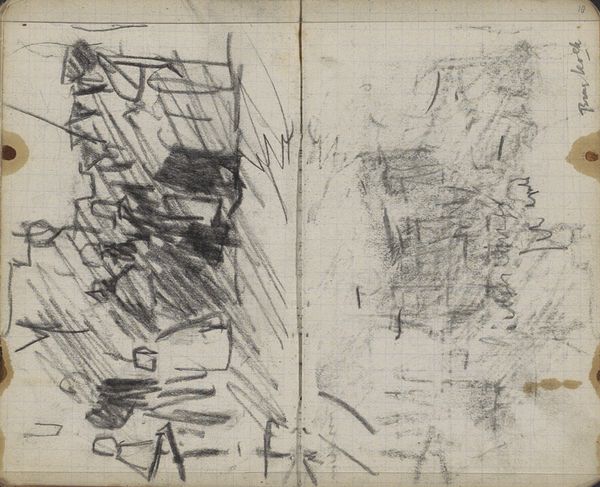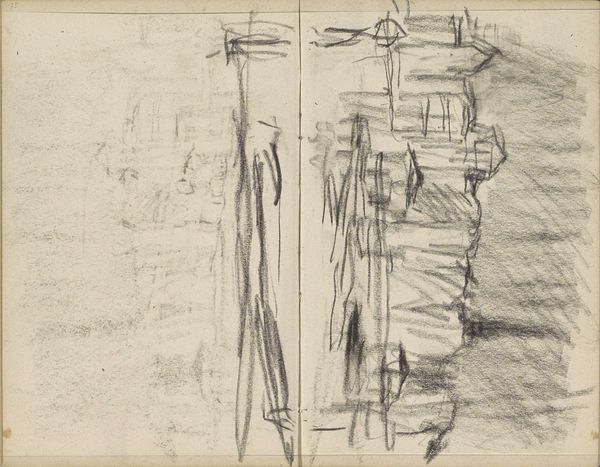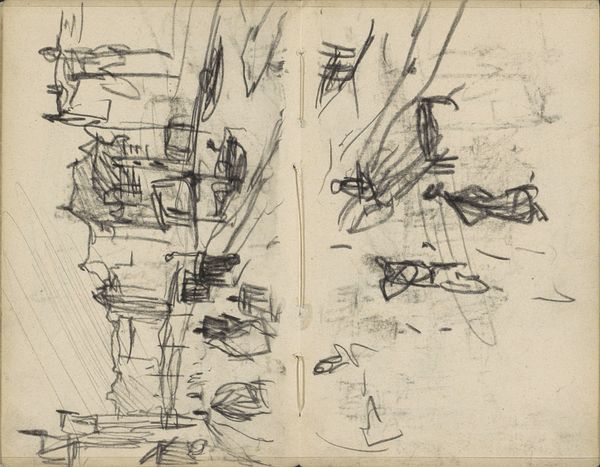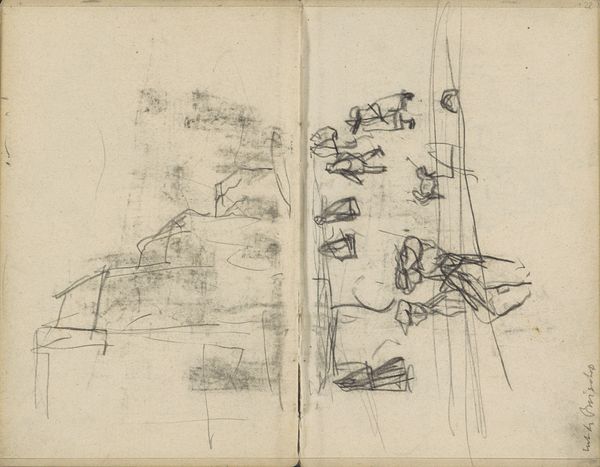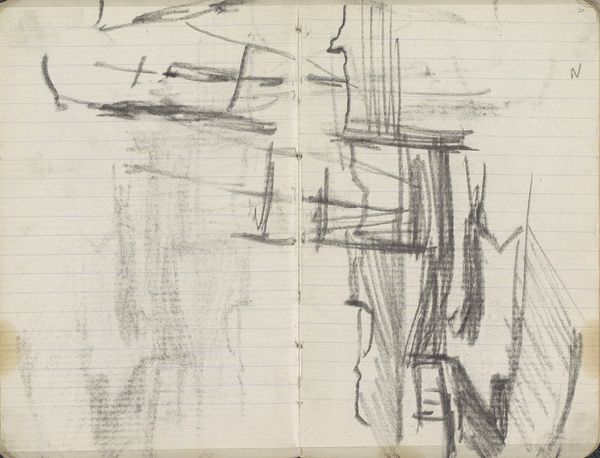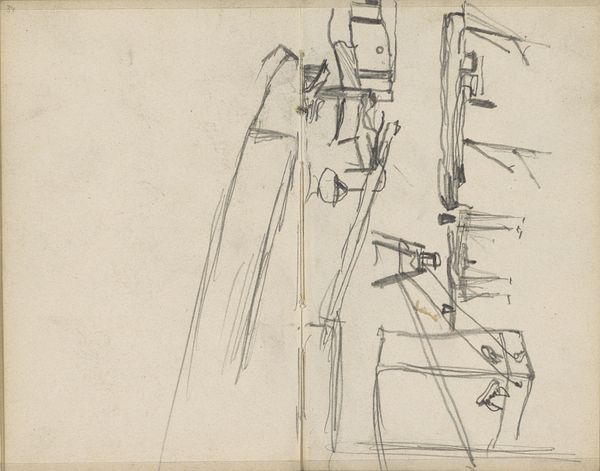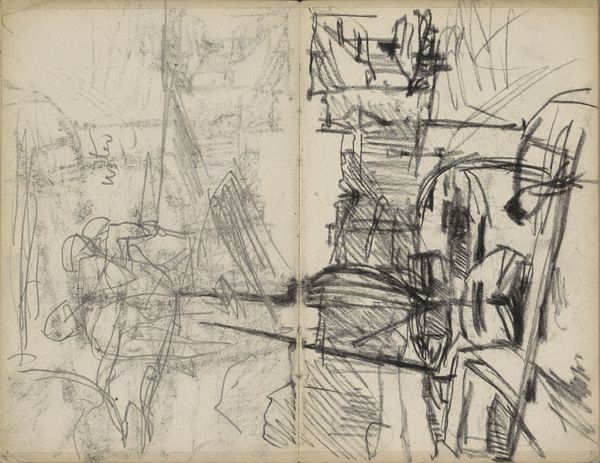
#
toned paper
#
light pencil work
#
quirky sketch
#
sketch book
#
incomplete sketchy
#
personal sketchbook
#
sketchwork
#
pen-ink sketch
#
sketchbook drawing
#
sketchbook art
Copyright: Rijks Museum: Open Domain
Curator: This is a quick sketch by George Hendrik Breitner, likely dating around 1903. The Rijksmuseum holds it. It’s titled “Gezicht op het Rokin te Amsterdam met stratenmakers,” which translates to “View of the Rokin in Amsterdam with Pavement Workers.” Editor: It has an unfinished feel, a certain restlessness, with those loose lines crisscrossing. The stark monochrome and toned paper add to this sense of a moment caught fleetingly. I see figures sketched rapidly, capturing the gestures of labor. Curator: Exactly. Breitner was deeply invested in representing everyday urban life, the workers, the grit, the rapid changes Amsterdam was undergoing at the turn of the century. He wasn’t interested in romanticized visions; instead, he presented raw, unfiltered observations. This sketchbook page offers insight into his process. He really aimed to capture those brief instants, so his hand seems to be moving so fast, creating forms quickly and imperfectly. Editor: I find it fascinating to consider the social implications. This wasn't art for the elite salons; this was art of and about the working class. Breitner turns his sketchbook to laborers: men building the city while class inequality grew during industrialisation. Where do the working class fit in? What is it like to work for them? Who acknowledges that labor? It gives an activist slant, if we acknowledge these implications of the piece in its era. Curator: Absolutely. It is a piece that serves as documentary evidence too. Looking closely, the sketch allows us to imagine Amsterdam's urban development during this era. As art history and urban theory overlap in many respects, what we might assume is merely an impression becomes historical source material. Editor: A visual artifact. And thinking about art history from the perspective of gender, race, and class… it reminds me to always question whose stories are prioritized, and to bring these marginalized narratives into dialogue. Breitner's choice to focus on the street and its workers, even in an unrefined sketch like this, disrupts traditional expectations of 'high art'. Curator: It becomes a radical act, in a way. Well, that is certainly given us much to reflect on. Editor: Indeed. An incomplete sketch, yet it triggers important questions of inequality and representation, even today.
Comments
No comments
Be the first to comment and join the conversation on the ultimate creative platform.
